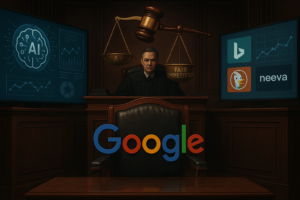Unmasking Deepfake Videos: The Role of AI in Creating and Detecting Misinformation
In recent years, artificial intelligence (AI) has revolutionized numerous industries, from healthcare to finance. However, one of its most controversial applications is the creation of deepfake videos. These AI-generated manipulations can produce hyper-realistic videos that can deceive even the most trained eyes, raising significant concerns about misinformation and cybersecurity.
The Rise of Deepfake Technology
Deepfakes use machine learning algorithms, particularly a subset of AI known as Generative Adversarial Networks (GANs), to create convincing fake videos. These networks consist of two parts: a generator that creates the fake content and a discriminator that evaluates its authenticity. Over time, the generator learns to produce increasingly realistic fakes, often indistinguishable from reality.
Statistics and Growth:
- According to a study by Deeptrace, the number of deepfake videos online doubled from 7,964 in 2018 to over 14,678 in 2019.
- By 2023, experts estimated that there would be over 100,000 deepfake videos circulating on the internet.
Case Study: The Pelosi Video
A recent example of deepfake technology in action involved a video purportedly showing Speaker Emerita Nancy Pelosi falling on the House floor. Widely circulated on social media, the video was later debunked as an AI-generated fake. Despite its inaccuracy, the clip gained significant attention, underlining the potential of deepfakes to spread misinformation rapidly.
The Impact on Society and Politics
Deepfakes pose a profound threat to society, particularly in the realm of politics. They can be used to create fake speeches or actions by public figures, potentially swaying public opinion and affecting election outcomes. This manipulation of reality has led to widespread calls for regulation and the development of detection technologies.
Impact Statistics:
- A 2021 survey by Pew Research Center found that 64% of Americans believe deepfakes will increase the difficulty of distinguishing between true and false information online.
- A 2022 report by MIT Technology Review highlighted that deepfakes have been used in political campaigns in over 20 countries worldwide.
Combating the Threat: AI as the Solution
While AI is the tool behind deepfakes, it is also the key to detecting them. Researchers are leveraging AI to develop detection systems capable of identifying fake content. These systems analyze inconsistencies in video and audio that are often imperceptible to humans.
Advancements in Detection:
- An AI model developed by researchers at UC Berkeley can detect deepfakes with 97% accuracy by analyzing inconsistencies in eye movement and facial expressions.
- In 2023, Microsoft released a deepfake detection tool for journalists and political campaigns, enhancing their ability to verify the authenticity of video content.
The Role of Cybersecurity
As deepfakes become more prevalent, the cybersecurity industry must adapt to address this new threat. Organizations are investing in technologies and training programs to equip their teams with the skills necessary to combat deepfakes.
Cybersecurity Measures:
- Companies like Deeptrace and Sensity are developing AI-driven solutions to monitor and detect deepfake content across various platforms.
- Governments are investing in cybersecurity education, emphasizing the importance of recognizing and responding to deepfake threats.
The Future of AI and Misinformation
The battle against deepfakes is ongoing and requires a multi-faceted approach. Collaboration between governments, tech companies, and cybersecurity experts is essential to develop effective strategies to combat this issue.
Future Directions:
- The European Union is considering legislation requiring platforms to label deepfake content, potentially reducing its impact on public opinion.
- AI ethics committees are being established to ensure that AI technologies are used responsibly and transparently.
Conclusion
Deepfake technology presents significant challenges, but it also offers opportunities for innovation in detection and cybersecurity. By harnessing AI’s potential to both create and identify fake content, society can develop robust defenses against misinformation. As we navigate this digital landscape, continued vigilance and collaboration will be key to maintaining the integrity of information in the age of AI.
In a world where the line between reality and fiction is increasingly blurred, the ability to discern truth is more critical than ever. Understanding the capabilities and limitations of AI is essential in combating the potential dangers posed by deepfake technology, ensuring that the digital realm remains a place of trust and authenticity.


